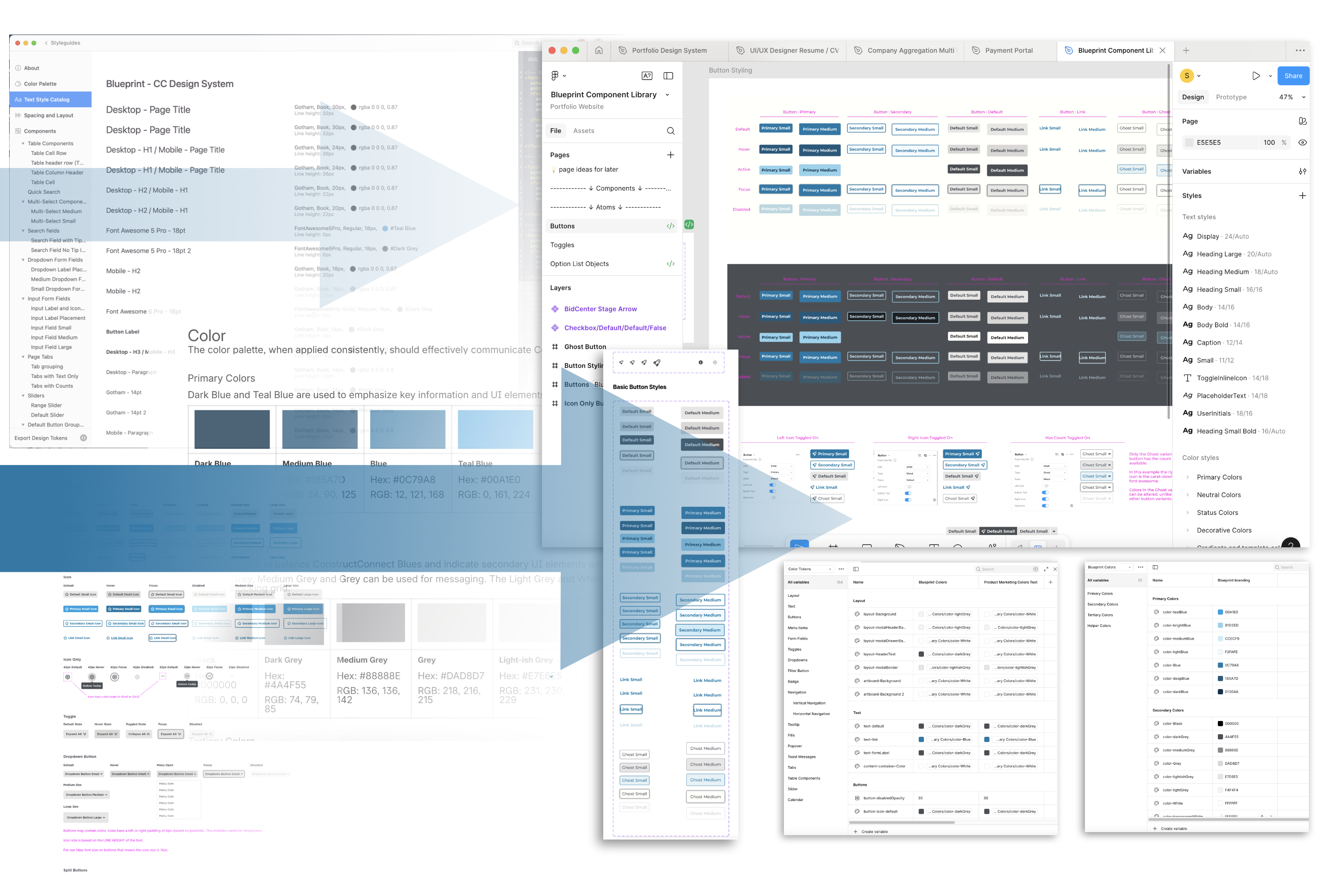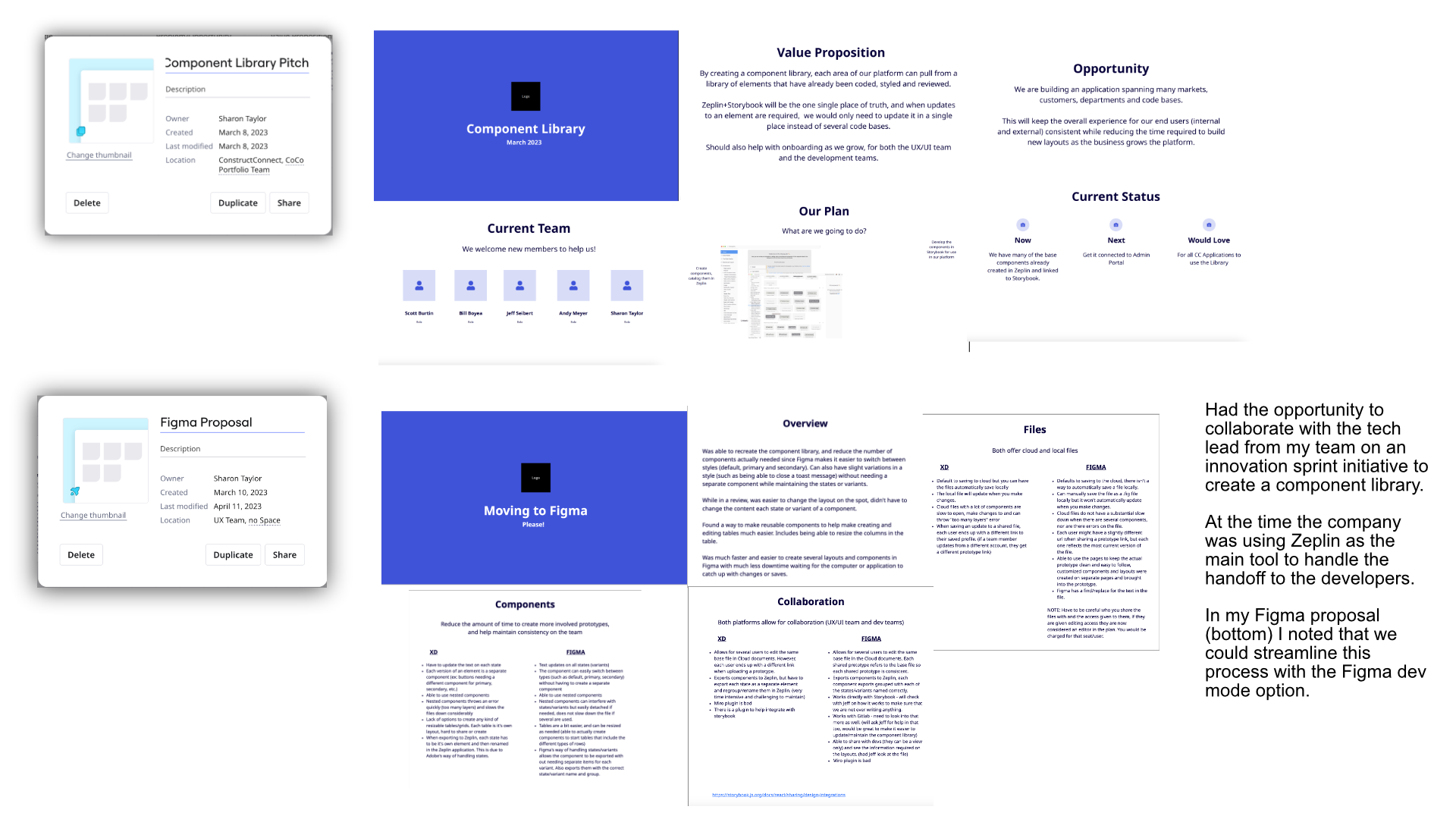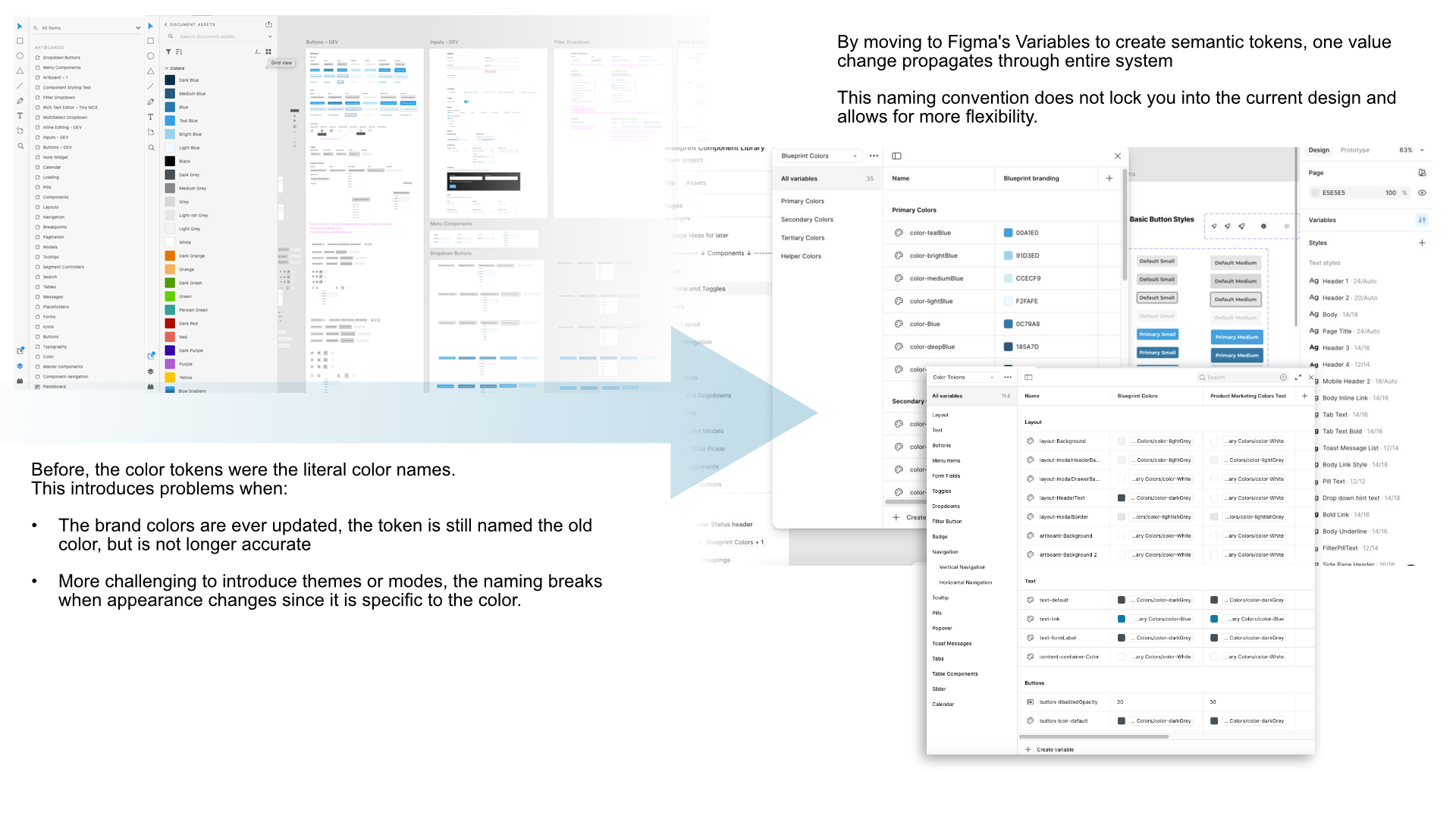The strategic foundation.
Through conversations with our tech lead about components being rebuilt across platforms, I volunteered to join an innovation sprint creating a systematic solution. This was a cross-functional team (Product, Design, Engineering) working within existing constraints—Zeplin as source of truth at the time.
Through projects using Figma, it identified that we could streamline the process with better dev collaboration and direct Storybook integration, eliminating the Zeplin handoff step.
While the actual creation of the component library was temporarily postponed, I continued building the foundation that would eventually enable the vision we identified together.
They were not competing ideas.
They were complementary solutions.


